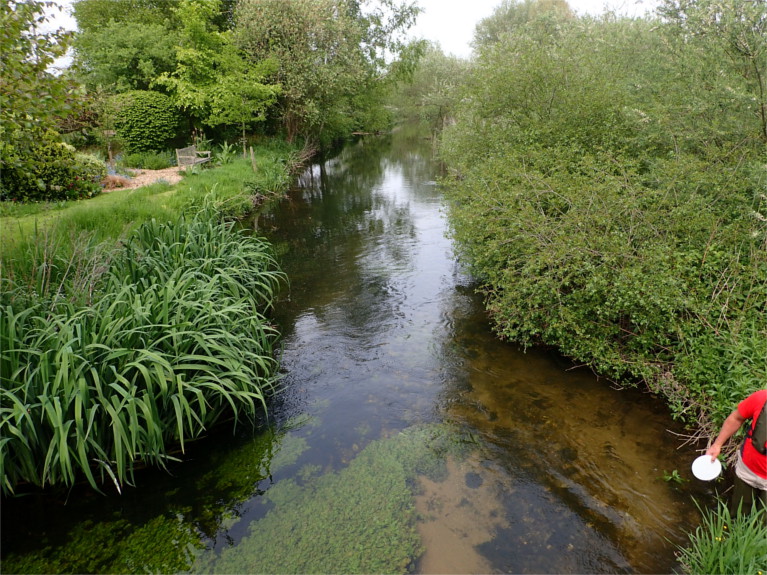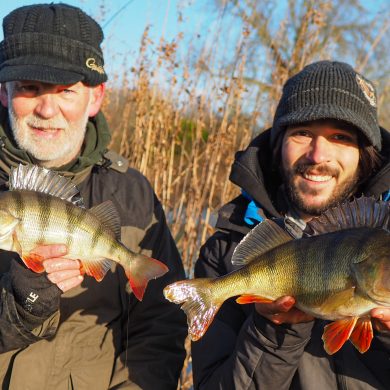Salmon & Trout Conservation (S&TC), a charity working to protect wild fish and their waters, has just completed the second year of its unique three-year national Riverfly Census. The census aims to assess the health of our English and Welsh rivers through monitoring the invertebrate communities that live below the surface.
This important research has revealed that nationally no significant improvement in the condition of our rivers and chalkstreams has occurred on the initial 12 rivers included in the study over the past two years.
Dr Janina Gray, S&TC’s Head of Science said, “The message from our Census is that 2016 was yet another worrying year for freshwater habitats across the country from Cornwall to Northumberland. Where problems exist, sediment and phosphate remain the main threats that are polluting our Census rivers.”
According to S&TC the threat to our rivers has moved from industrial pollution to a range of more subtle but equally damaging impacts from excess phosphates and sediment. These enter our watercourses from sources such as agricultural and road run-off, poorly treated sewage, septic tanks, new developments and in certain areas discharges from watercress and fish farms.
Nick Measham, Census Campaign Manager, said, “The aim of our Riverfly Census is to provide an accurate picture of water quality, to gauge the problems we are facing and to identify workable solutions to restore degraded watercourses. To do this, we analyse the invertebrates down to individual species rather than families. Different species have unique tolerances to specific types of pollution. Therefore, the presence or absence of species provides an excellent indicator of the underlying ecological condition of our rivers. The increase in resolution is akin to moving from a magnifying glass to a microscope.”
The evidence from the Census shows phosphates and sediment are having a disastrous impact on invertebrate communities in certain reaches of our rivers. They are toxic to invertebrates in isolation and more so in combination. Loss of flylife causes major disruption to the delicate balance of the aquatic food chain, with fish, mammals and bird populations suffering as a result.
Two of our most highly protected chalkstreams – the rivers Wensum and Itchen – ranked poorly in the Census in 2015 despite their SAC protection status. Results from the 2016 Census show that there has been very little change in their condition.
Dr Gray said “Understanding why and to what extent riverfly numbers, such as blue-winged olives, or Gammarus are declining is the first step in the process of safeguarding the aquatic environment. We are using these results to help fuel real improvements on our rivers. For example, we have worked with the local Environment Agency on the Test and Itchen in Hampshire to agree bespoke targets for mayfly species and Gammarus shrimp to drive action.”
As can be seen from the results of S&TC Riverfly Census, it is imperative that people who care about their local river start to act now.
Nick Measham explains, “Our rivers and chalkstreams are wonderful places of solace. However, although these rivers may appear healthy on the surface, our research shows that many are dying underneath.”
According to S&TC, current monitoring largely fails to pick up the pressures these rivers are facing. The charity is therefore calling for local people to challenge and act for their precious rivers.
Nick Measham explains, “We would like local people to help change the way our rivers are managed by demanding better protection and monitoring. We can suggest training for people who wish to become more ‘hands on’ with monitoring the condition and quality of their own river. Alternatively get in touch with us so that we can take forward issues with local MPs or the Environment Agency. This is a call to arms to everyone to help save our rivers and the important aquatic wildlife that clean water supports.”
Want to know how your river is doing?
Please click here for the full results for the 12 rivers surveyed which are;-
- Avon
- Axe
- Camel
- Coquet
- Dove
- Eden
- Frome
- Itchen
- Lambourn
- Test
- Ure
- Wales
- Welland
- Wensum
- Wye
For further information on the Riverfly Census or to contact Salmon & Trout Conservation, please email: lauren@salmon-trout.org or visit the website: www.salmon-trout.org


